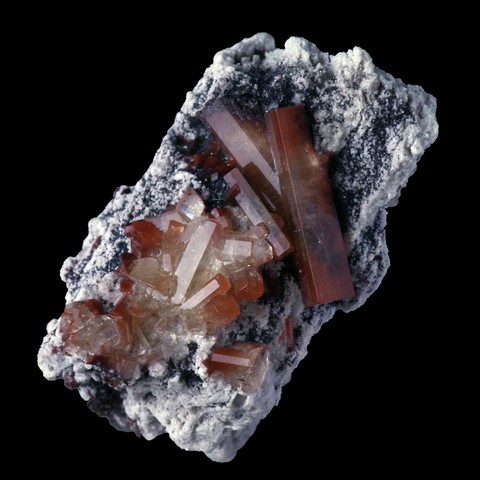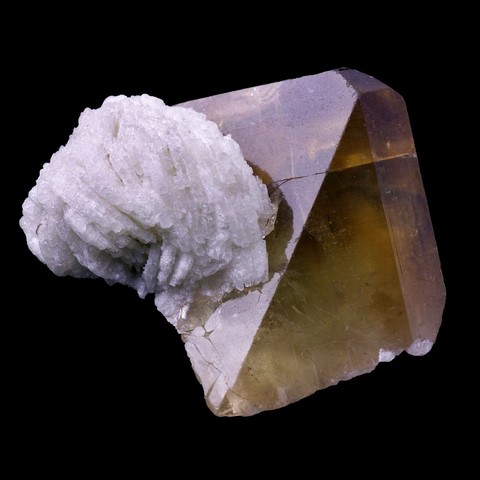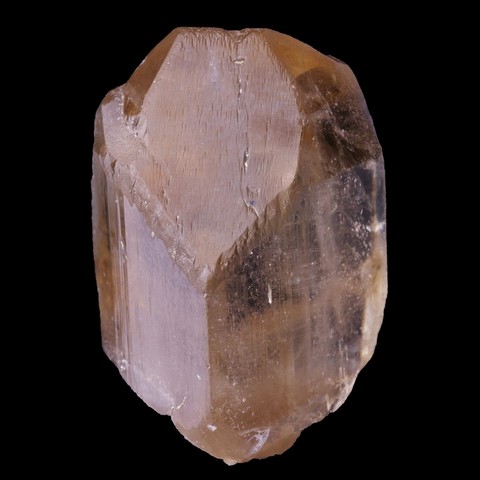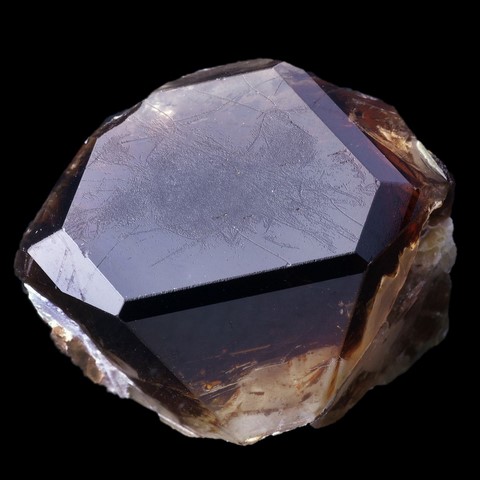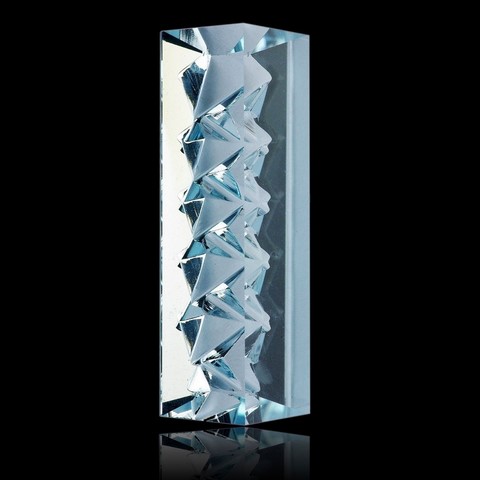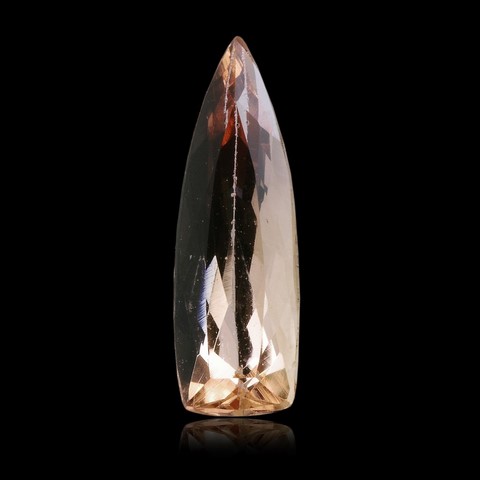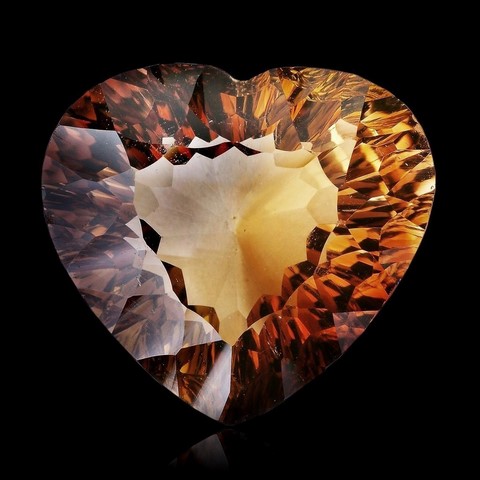TOPAZ
Class : Silicates
Subclass : Nesosilicates
Crystal system : Orthorhombic
Chemistry : Al2SiO4(F,OH)2
Rarity : Common
Topaz is primarily a mineral of pegmatites, although it is also present in high-temperature tin-tungsten veins, rhyolite cavities, greseins and exceptionally in metamorphic limestone ("saramenha" topaz). Heavy and unalterable, it is also a frequent alluvial mineral. It owes its name to the Greek topazion (and then to the Latin topazius), which used to refer to yellow gemstones. The topaz can be of different colors. Most often perfectly colorless, it can be pale blue, pale yellow to orange-brown (including the famous champagne color of imperial topaz), more rarely pink or purple ; it is very often transparent. These qualities combined with its high hardness of 8 on the Mohs scale, make it a gem used for a long time in jewelry. Topaz crystals are common in nature : orthorhombic prisms squat to elongated, striated faces and square section (blue topaz of pegmatites) or lozenge, terminated by a flat pyramid, degraded, or acute roof. Its high density makes it distinguishable from Spanish topaz (an misnomer commercial term for citrines).
Topaz in the World
Topaz in France
In France, the Montbelleux tungsten mine (Ille-et-Vilaine) supplied 4 cm topaz crystals. It is found in millimetric crystals, rarely centimetric in the kaolin quarries of Echassières (Allier).
Twinning and special forms
No twin known for the species.
Fakes and scams
Numerous treatments exist for topaz, especially irradiation, which allows bluing of colorless topaz. Once irradiated, these topazes take different commercial names depending on the intensity of the blue obtained (Sky Blue, London Blue, etc ...), this treatment is completely undetectable without advanced laboratory analysis. Yellow topazes can also be heated to give them a color close to Imperial Topaz. This treatment may also be difficult to spot.
Hardness : 8
Density : 3.4 to 3.6
Fracture : Irregular to subconchoidal
Trace : White
TP : Transparent to translucent
IR : 1.606 to 1.638
Birefringence : 0.010
Optical character : Biaxial +
Pleochroism : Weak
Fluorescence : Yellow, green, white
Solubility : Sulfuric acid
Magnetism : None
Radioactivity : None, sometimes in trace when treated

